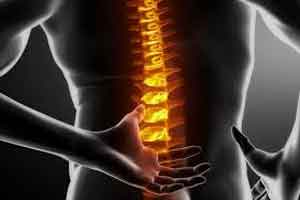- Home
- Editorial
- News
- Practice Guidelines
- Anesthesiology Guidelines
- Cancer Guidelines
- Cardiac Sciences Guidelines
- Critical Care Guidelines
- Dentistry Guidelines
- Dermatology Guidelines
- Diabetes and Endo Guidelines
- Diagnostics Guidelines
- ENT Guidelines
- Featured Practice Guidelines
- Gastroenterology Guidelines
- Geriatrics Guidelines
- Medicine Guidelines
- Nephrology Guidelines
- Neurosciences Guidelines
- Obs and Gynae Guidelines
- Ophthalmology Guidelines
- Orthopaedics Guidelines
- Paediatrics Guidelines
- Psychiatry Guidelines
- Pulmonology Guidelines
- Radiology Guidelines
- Surgery Guidelines
- Urology Guidelines
Exercise helps prevent low back pain and makes it less severe

People who exercise may lower their odds of developing low back pain or may reduce the intensity of back pain they do experience, a research review suggests.Compared to people who didn’t exercise, those who did were 33 percent less likely to develop low back pain, the analysis of data from 16 previously published studies found. Pairing exercise with patient education about back pain was associated with 27 percent lower odds of developing low back pain, the study also found.
“The study shows that exercises for strengthening and stretching the lumbar and abdominal muscles, or a combination of strengthening and aerobic exercises protect against low back pain,” said lead study author Dr. Rahman Shiri of the Finnish Institute of Occupational Health in Helsinki.
The researchers analyzed results from previous experiments that randomly assigned people with or without back pain to start different exercise routines. They also looked at some studies that compared exercise alone or exercise paired with education.
Altogether, the studies in the analysis had a total of 4,310 participants. Individual studies ranged in size from 30 to 901 participants and followed people for 2 to 24 months.
Many of the trials included stretching exercises, and some looked at strengthening, aerobic fitness, endurance, balance, coordination and motor skills.
Four studies were conducted in Japan, three in Denmark, two in Sweden and one each in Canada, Finland, Italy, New Zealand, Thailand, the UK and the United States.
Five studies only included people who didn’t have back pain to see if they developed it, while the rest included participants with and without back pain.
Exercise alone, compared to no physical activity, was associated with a 38 percent lower risk of disability due to low back pain, an analysis of five studies found. Adding patient education to exercise got similar results, one study concluded.
While exercise appeared to also lower the chances that participants would seek medical care or go on sick leave for low back pain, the difference was too small to rule out the possibility that it was due to chance.
One limitation of the review is that it focused on people in the general population, so it’s possible the impact of exercise might be different for individuals already suffering from low back pain, the authors note in the American Journal of Epidemiology.
Another drawback is that the analysis didn’t explore whether one type of exercise might be better than another for preventing low back pain, said Steven George, a researcher at Duke University in Durham, North Carolina, who wasn’t involved in the study.
“This study also could not separate the physical and mental benefits of exercise,” George said by email. “My guess is that the individual gets the benefit of both with exercise.”
Any exercise people like may help as long as they do it often enough, said Bruno Saragiotto, a public health researcher at the University of Sydney in Australia who wasn’t involved in the review. Ideally, people should get at least 150 minutes a week of moderate-intensity activity, he said by email.
Many other things people try for back pain - like braces, special mattresses, and custom footwear - haven’t been found to help like exercise has, noted Julie Fritz, a researcher at the University of Utah in Salt Lake City who wasn’t involved in the review.
“This current study helps to reinforce and strengthen further our knowledge that exercise is about the only thing that consistently results in reduced risk of developing back pain,” Fritz said by email. “For patients who have had prior episodes of back pain, exercise helps reduce the risk of a new episode.”
For more details click on the link: bit.ly/2zoyw0F American Journal of Epidemiology, online October 19, 2017.

Disclaimer: This site is primarily intended for healthcare professionals. Any content/information on this website does not replace the advice of medical and/or health professionals and should not be construed as medical/diagnostic advice/endorsement or prescription. Use of this site is subject to our terms of use, privacy policy, advertisement policy. © 2020 Minerva Medical Treatment Pvt Ltd